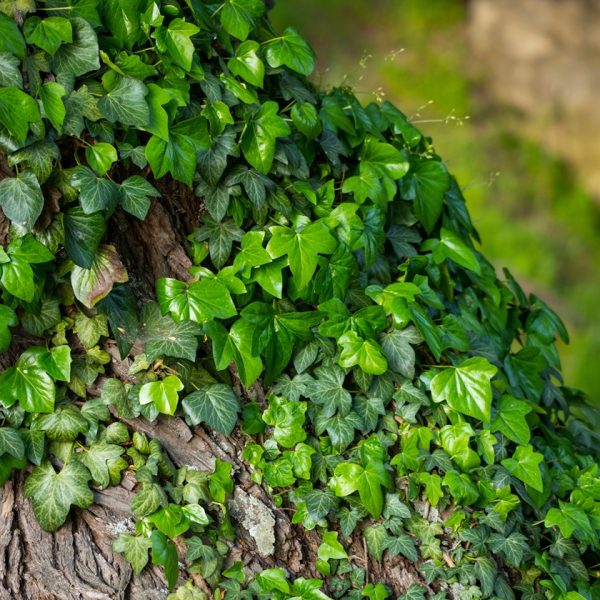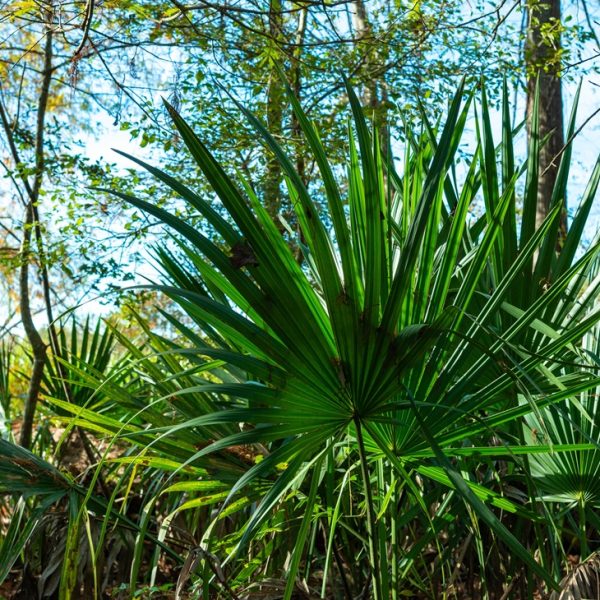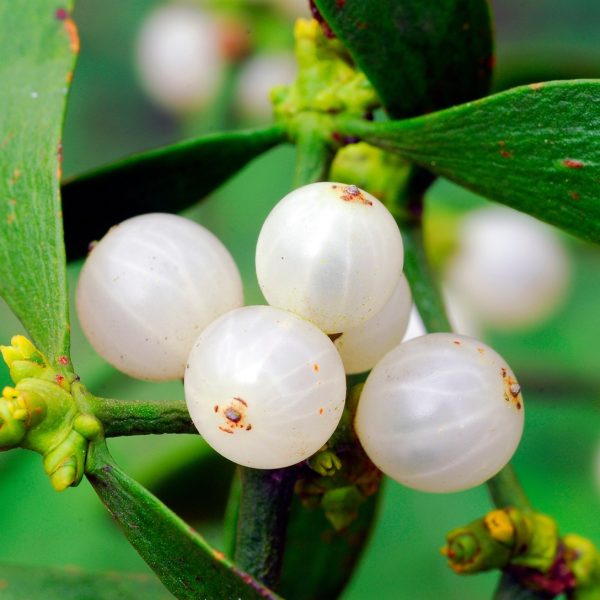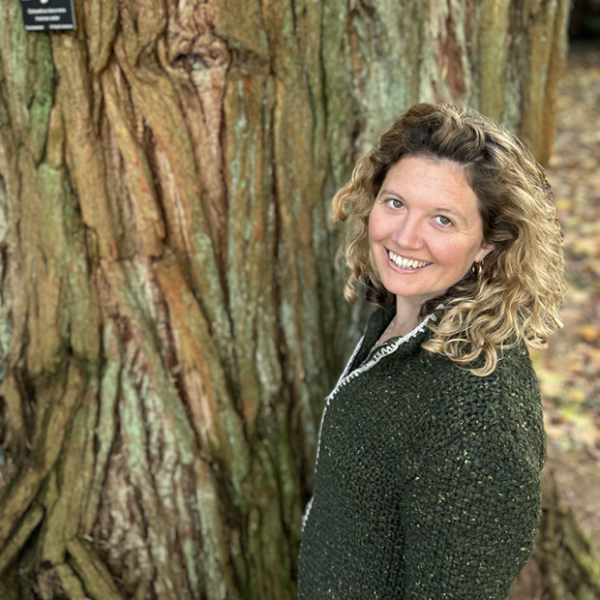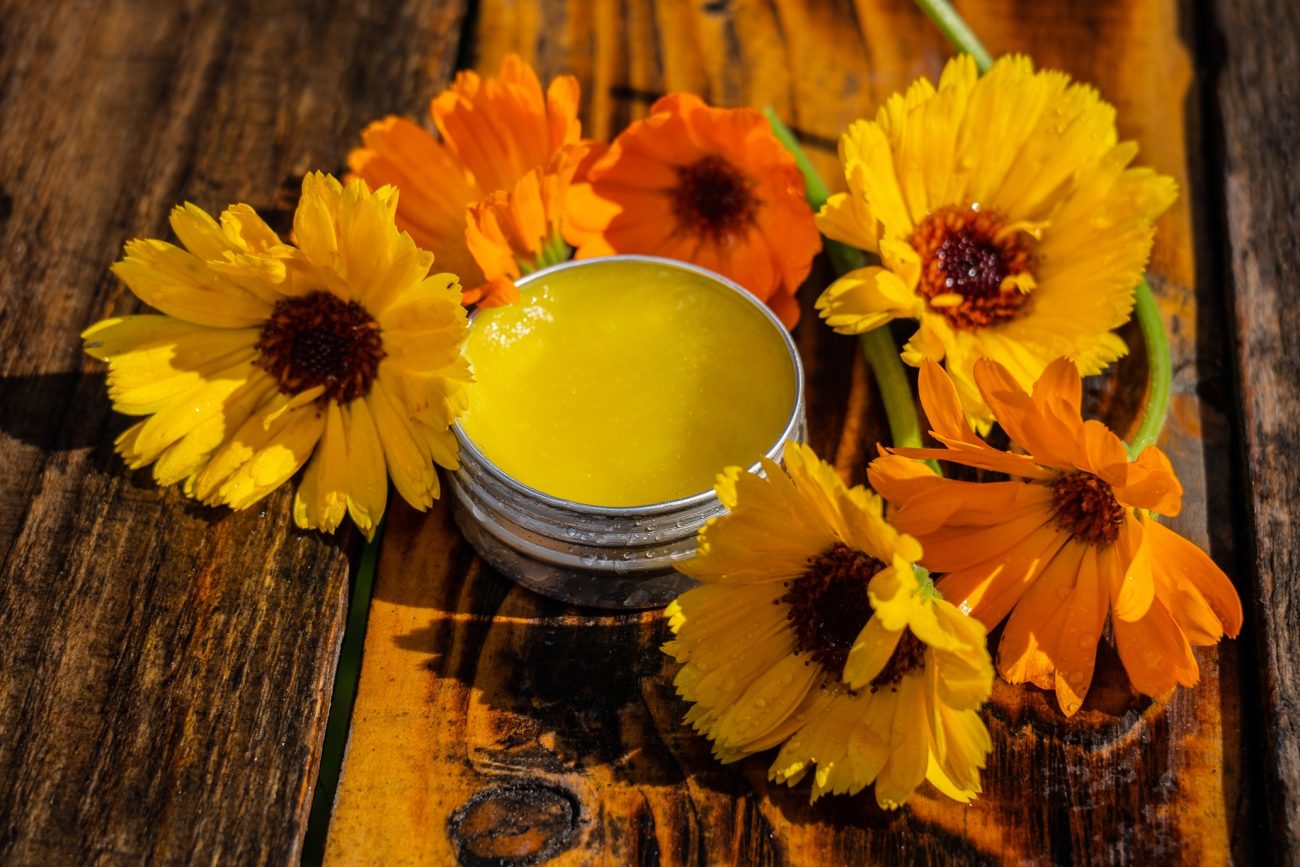
Learn how to make a plantain, yarrow, calendula and daisy first aid balm to use on minor cuts, bites, bruises and irritated skin.
15 minutes prep time | 4 hours cooking time | Beginner | 8 servings
This first aid balm is an excellent addition to a home herbal first aid kit. Its versatility lends it to be used for an array of conditions, including bites, stings, skin inflammations, minor cuts, bruises and general skin irritations. The blend of yarrow, plantain, calendula and daisy together support wound healing, reduce inflammation and bruising, and soothe itchy or irritated skin.
This easy-to-make balm can be transported easily and kept on hand for any outdoor summer pursuits. These herbs can be picked fresh and can be found growing wild in many areas of the UK. If foraged, it is best to dry the herbs first for this recipe, in order to prolong the shelf life and avoid any risk of mould.
How to make a herbal first aid balm
- Place the herbs into the muslin and tie into
- Leave the herbs to infuse into the oil for 2–3 hours. The oil should take on the colour of the herbs.
- Remove the muslin cloth of herbs and strain the oil for any additional herb matter.
- Place the oil and beeswax into the bain-marie and stir until the beeswax has completely dissolved.
- Pour the mixture evenly into the containers.
- If using lavender essential oil, add three drops per container once the oil has cooled slightly, but before the balm begins to harden.
- Leave to cool completely, then seal and label the containers.
Medicinal benefits of first aid herbs

Yarrow (Achillea millefolium)
Yarrow has astringent and styptic actions due to the tannin content which help to constrict blood vessels and stop minor bleeding. Yarrow has also been shown to stimulate fibroblast activity and enhance collagen synthesis helping to accelerate wound healing and tissue regeneration. The volatile oils and phenolic acids in yarrow have been shown to inhibit the growth of bacteria and fungi thereby helping to reduce the risk of infection on the skin (1,2).
Calendula (Calendula officinalis)
Calendula is often used to calm inflammatory conditions of the skin such as eczema or dermatitis. Calendula is an emollient and helps to hydrate the skin by moisturising and retaining moisture. Calendula promotes tissue granulation by increasing fibroblast activity and collagen synthesis, thereby accelerating wound healing. Calendula also has antimicrobial, antifungal and anti-inflammatory actions so helps to reduce redness and swelling. It has also been shown to limit the occurrence of blistering following a burn and accelerate healing (3,4).
Plantain (Plantago lanceolata)
Plantain is well renowned for its wound healing properties due to the flavonoid, tannin and mucilage content of the leaves. Plantain soothes and reduces skin inflammation and redness and a poultice is often applied in first aid situations for bites and stings. Plantain accelerates tissue regeneration by promoting fibroblast activity and epithelisation (5). It has also been shown to be effective in treating second degree burns (6). The tannins also astringe the skin and help to stop bleeding.
Daisy (Bellis perennis)
Daisy has similar properties to arnica, which is useful in the treatment of bruises and swellings. Daisy, however, is a more sustainable alternative, as wild arnica populations are under threat and daisies grow abundantly in the UK, so are easily found and foraged. Daisy helps to increase venous blood flow and reduce blood stasis thereby decreasing bruising. The presence of flavonoids and tannins also help to constrict tissue and promote wound healing. Daisy also has anti-inflammatory properties which help to reduce swelling and redness (7).
FAQs
Can I use fresh herbs?
This first aid balm recipe is best made with dried herbs to prolong the shelf life as the water content of fresh herbs may cause the balm to go rancid or mouldy too quickly.
What is the expected shelf life?
This first aid balm will keep for up to a year if it’s stored in a cool, dark place. Make sure to check for any sign of mould or oil rancidity and do not use it if this is the case.
References
- Mohammad Reza Ghasemi, Ranjbar A, Pari Tamri, Shabnam Pourmoslemi, Nourian A, Dastan D. In vitro Antibacterial Activity and Wound Healing Effects of Achillea millefolium Essential Oil in Rat. Journal of Pharmacopuncture. 2023;26(2):167-174. https://doi.org/10.3831/kpi.2023.26.2.167
- Mohammad Reza Ghasemi, Ranjbar A, Pari Tamri, Shabnam Pourmoslemi, Nourian A, Dastan D. In vitro Antibacterial Activity and Wound Healing Effects of Achillea millefolium Essential Oil in Rat. Journal of Pharmacopuncture. 2023;26(2):167-174. https://doi.org/10.3831/kpi.2023.26.2.167
- Shahane K, Kshirsagar M, Tambe S, et al. An Updated Review on the Multifaceted Therapeutic Potential of Calendula officinalis L. Pharmaceuticals. 2023;16(4):611. https://doi.org/10.3390/ph16040611
- Ovinuchi Ejiohuo, Samson Folami, Abdulkadir Yusif Maigoro. Calendula in modern medicine: Advancements in wound healing and drug delivery applications. European Journal of Medicinal Chemistry Reports. 2024;12:100199-100199. https://doi.org/10.1016/j.ejmcr.2024.100199
- Kartini K, Wati N, Gustav R, et al. Wound healing effects of Plantago major extract and its chemical compounds in hyperglycemic rats. Food Bioscience. 2021;41:100937. https://doi.org/10.1016/j.fbio.2021.100937
- Keshavarzi A, Montaseri H, Akrami R, et al. Therapeutic Efficacy of Great Plantain (Plantago major L.) in the Treatment of Second-Degree Burn Wounds: A Case-Control Study. International Journal of Clinical Practice. 2022;2022:e4923277. https://doi.org/10.1155/2022/4923277
- Dilip Mane P. A Review of Bellis Perennis: Chemical Composition, Pharmacological Activities, and Applications in Herbal Medicine. International Journal of Research Publication and Reviews Journal homepage: wwwijrprcom. 2025;6. Accessed August 1, 2025. https://ijrpr.com/uploads/V6ISSUE3/IJRPR40516.pdf

